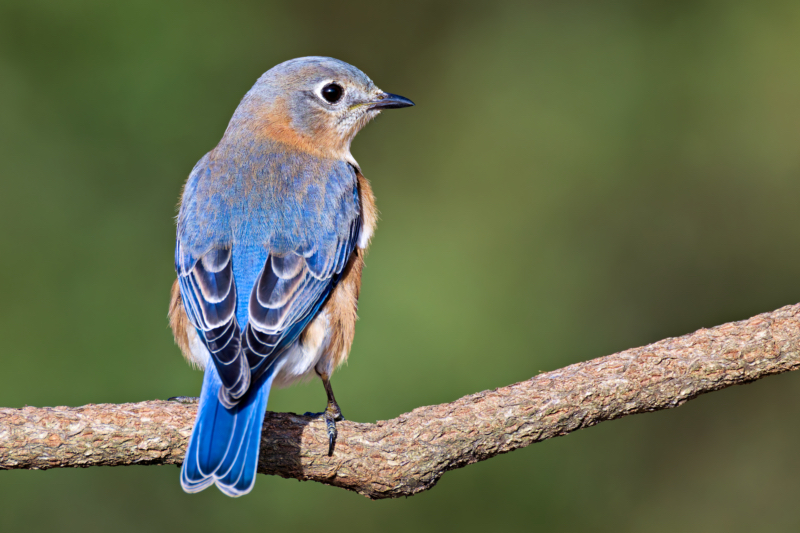Depth of field (DOF) is a fundamental technique in wildlife photography that enhances the impact of your images. By controlling the area of sharp focus, you can effectively isolate subjects, highlight intricate details, and achieve beautifully blurred backgrounds. This guide will help you master DOF to elevate your wildlife portraits.
Understanding Depth of Field in Wildlife Photography
DOF determines how much of an image remains in sharp focus. A shallow DOF means only a small portion is sharp, while a deep DOF keeps more of the scene in focus. By manipulating DOF, you can direct attention to your subject and minimize distractions.
Controlling Depth of Field with Aperture
Aperture, measured in f-stops, plays a critical role in depth control:
- Wide Aperture (Low f-stop, e.g., f/2.8–f/5.6): Produces a shallow DOF, creating a soft, blurred background that makes the subject stand out. This setting is ideal for isolating wildlife against cluttered surroundings.
- Narrow Aperture (High f-stop, e.g., f/8–f/16): Increases DOF, keeping more of the scene in focus. This is useful for wildlife shots where environmental context enhances the composition.
Pro Tip: Use a wide aperture for close-up portraits and a narrower aperture for capturing animals within their habitat.
The Role of Distance in Wildlife Photography Depth of Field
The depth of field is also influenced by the distance between you, your subject, and the background:
- Closer to the subject: Results in a shallower DOF, enhancing background blur.
- Farther from the subject: Increases DOF, keeping more elements in focus.
- Increased subject-to-background distance: Enhances background blur, helping the subject stand out more effectively.
Selecting the Right Lens for Depth of Field in Wildlife Photography
The choice of lens significantly affects DOF control:
- Telephoto Lenses (300mm, 400mm, 600mm): Naturally create a shallower DOF and compress the background, producing soft, creamy bokeh.
- Prime Telephoto Lenses (e.g., 400mm f/2.8): Deliver superior subject isolation with exceptional sharpness.
- Zoom Lenses (e.g., 100-400mm): Offer versatility while still achieving beautiful background blur at longer focal lengths.
Optimizing Backgrounds for Wildlife Portraits
A shallow DOF is most effective when combined with a clean, distraction-free background. Consider the following:
- Color Contrast: Avoid busy backgrounds that detract from the subject.
- Soft Lighting: Evenly lit backgrounds improve subject separation.
- Natural Elements: Utilize trees, water, or sky as complementary backdrops for a balanced composition.
Achieving the Right Balance of Depth and Sharpness
While a shallow DOF can create stunning effects, achieving precise focus is essential:
- Focus on the Eyes: Sharp eyes are crucial for engaging wildlife portraits.
- Use Single-Point Autofocus: Ensures accuracy by directing focus exactly where needed.
- Increase Shutter Speed: Helps counteract slight movements when using a wider aperture.
Final Thoughts
Mastering depth of field gives you greater creative control in wildlife photography, allowing you to craft compelling portraits that captivate viewers. Experiment with different apertures, focal lengths, and distances to refine your style and achieve professional results.

Photo Example: Eastern Bluebird and Depth of Field
This Eastern Bluebird perched on a vine showcases the power of depth of field. A shallow DOF creates a beautifully blurred background, emphasizing the intricate feather details and vibrant colors of the bird. Perfect for isolating wildlife subjects in their natural habitat.
Camera & Settings: I was using the Canon RF 200-800 mm F6.3-9 IS USM at 800 mm – ƒ/10. The green shrubs in the background are a long distance away from where the bird was perched, creating excellent background blur. I was in a ground blind and positioned close to the bird. I decided on f/10 to capture more of the bird in focus. While f/9 might have worked, I find this lens to be sharper at f/10.
Tomorrow’s topic: “The Role of Color in Wildlife Photography and How to Use It Creatively.” Stay tuned!
